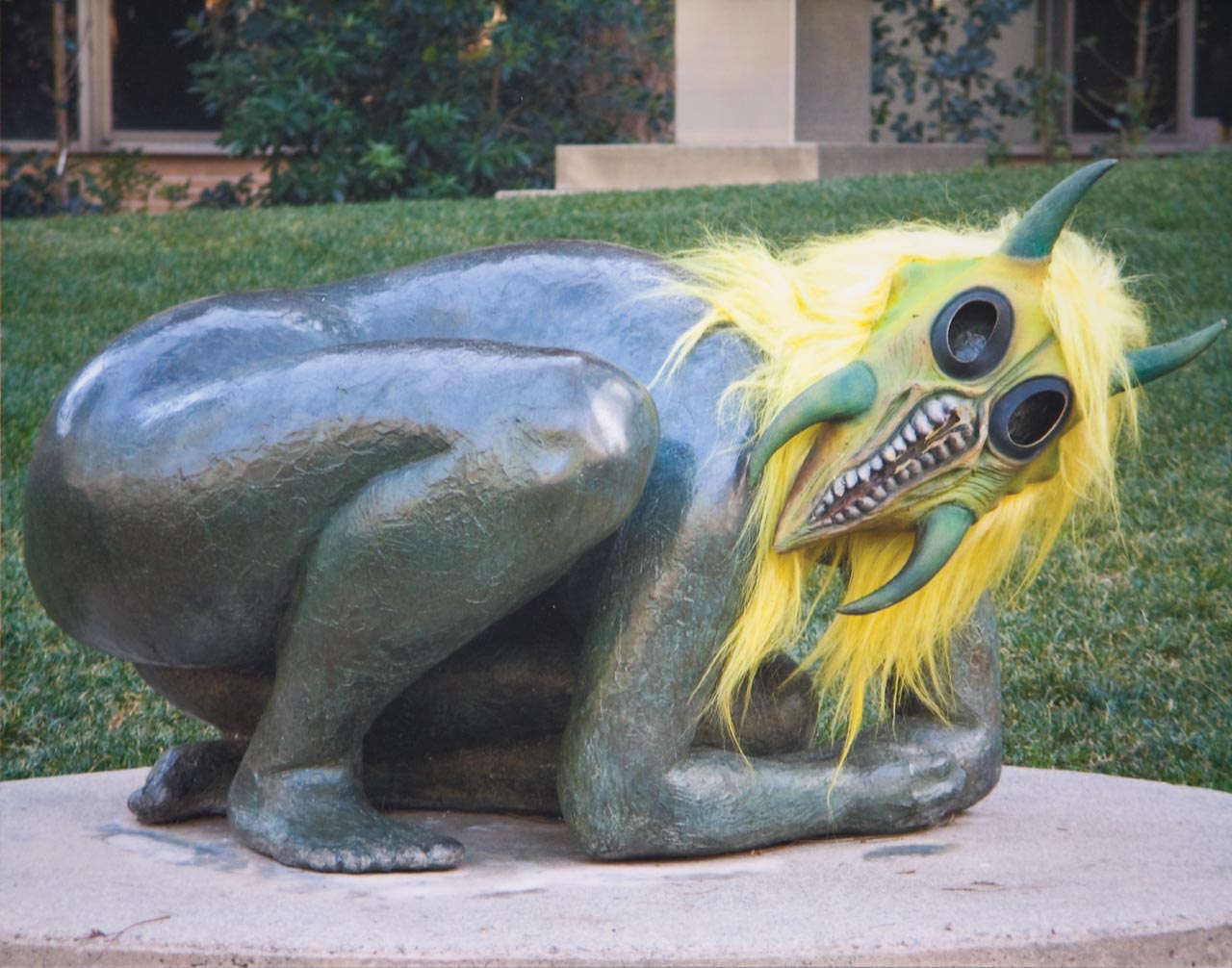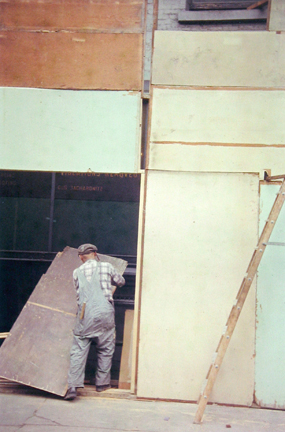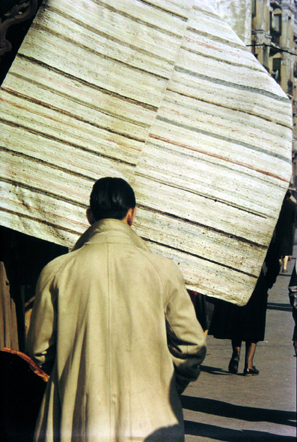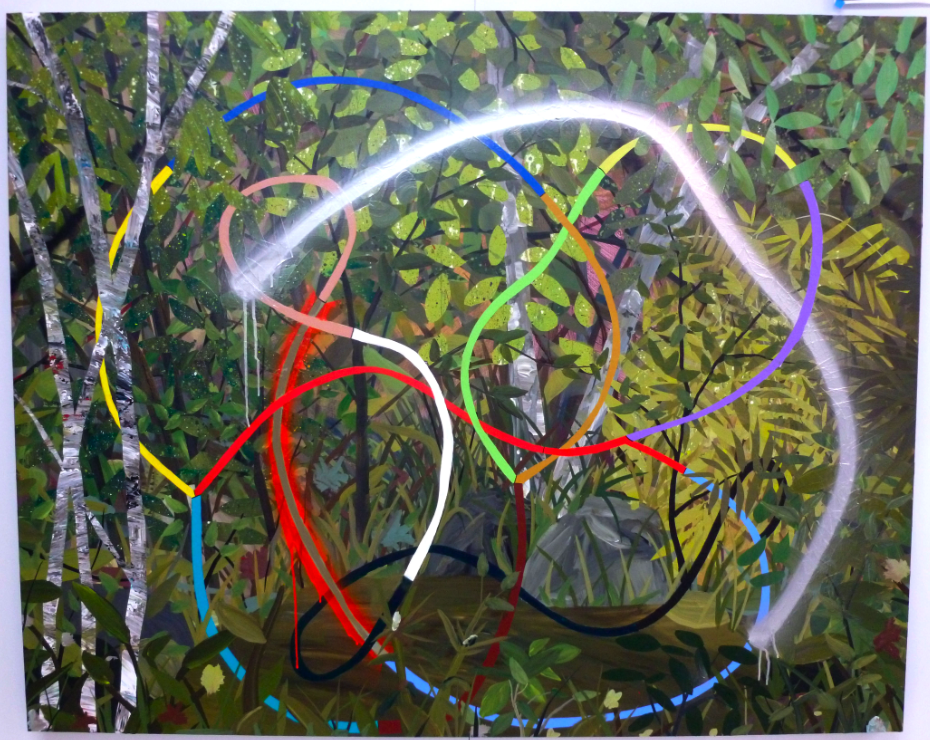
Nathan Mabry, In Your Face (Number 9), 2006, C-print on Sintra, © Nathan Mabry, courtesy of Rubell Family Collection, Miami
Beg Borrow and Steal | This exhibition brings together artists from different generations whose works abandon the search for new visuals, seeking instead an inventive use of existing images, signs, and cultural symbols.
Beg Borrow and Steal includes paintings, sculptures, photographs, and videos by 58 artists from the Rubell Family Collection/Contemporary Arts Foundation, with an emphasis on those working on the west coast, especially Los Angeles. The Southern California focus is significant because the region has had a formidable influence on the use of appropriation in art, the subject of the exhibition.
Artists in the exhibition who established this artistic lexicon include Ai Weiwei, Marcel Duchamp, Robert Gober, Jenny Holzer, Mike Kelley, Jeff Koons, Paul McCarthy, Takashi Murakami, Charles Ray, Andy Warhol, and Christopher Wool. Not surprisingly, photography plays a significant role in much of the work, which is represented in the exhibition by artists John Baldessari, Barbara Kruger, Sherrie Levine, Robert Longo, Richard Prince, David Salle, and Cindy Sherman. This group has been called the "pictures generation" due to their manipulations of photographic imagery.

Work / Space | A group exhibition of recent work by artists Phillip Estlund, Kirsten Kindler, and Katie Sinnott, three artists who are strongly influenced by architecture and the use of found materials inherent in their art making.
Kirsten Kindler (work pictured) builds intricate cut paper constructions that seem to teeter between order and chaos. Kindler searches through magazines and collects images of architectural details. She then precisely cuts and extracts the architectural elements to build delicate structures that are both harmonious and contradictory. There is a visual harmony and symmetry in the overall arrangement that has a beautiful lace-like quality. At the same time, the structure created is an improbable space as stairwells lead into more stairwells, arches and columns rest upon more arches and columns. By amassing numerous images of architectural objects to create a large but vulnerable structure, Kindler's airy architecture becomes a thoughtful reflection on the emptiness and fragility of our material culture.

Wayne White: Masterworks | Masterworks is comprised of selected paintings and works on paper from the first ten years of the White's signature word paintings.
Using framed offset lithographs from the 1960s and '70s, White inserts his voice as text into these "readymades," forming a new American landscape; panoramic vistas rife with wit and insight. Working on mass-produced lithographs allows him to play with notions of the authenticity and conventions of painting while mirroring our cultural stories. Redeeming these mass-produced items with words, White taps our collective memory of decorative pictures from the past while establishing a new clue or perverse quip of possible meanings. Good Looking People Having Fun With Out You is the earliest work in the exhibition, setting a tone derived from the artist's time working in the entertainment field. As one of the originators of the legendary 1980s television show, Pee Wee's Playhouse, White's humor reverberates through his art: Picasso's Ass Falling Off, "Honest Artists," and Tossed Off Crap, each chide our mythologies about cultural figures and/or interpersonal bad habits.


Saul Leiter: Post-War Color | A pioneer of early color photography, Saul Leiter has been shooting color pictures obsessively since the 1940s. Largely self-taught, he developed an abstract, lyrical form of photography centering on radically toned representations of metropolitan scenes during the heyday of black and white photography, when relatively few photographs other than those intended for reproduction in magazines or as advertisements were made in color. By compiling an extensive body of work in color during the medium's infancy the artist has made a significant contribution to its history and is noted as one of the outstanding figures in post-war photography.

Paul Wackers: Early Romantics | A new body of paintings that depict geometric still life assemblages interacting with natural settings. Wackers takes the still life object, deduces it into geometric and linear form, and takes an additional step: the form is simplified to abstract shapes while raw painting techniques mimic the nature of the object itself.
Wackers' work is rooted in inventive means of figuration. He uses a multi-method technique to support the subject at large. The formal quality and sincerity of his work walks between the lines of that of a 17th century Dutch still life painter a la Margareta Haverman or Willem Van Aelst, to atmospheric and broken down geometric landscapes, and sometimes to paintings on a single canvas that imitate diptych. Objects placed in the foreground of landscapes resemble hand-made sculptures and viewers may be tempted to wonder if they are not looking at the two-dimensional works of a very accomplished ceramicist! In this latest body of work Paul's paintings balance amazing confidence in his technique and structure with a spirited gentleness.
For the most comprehensive calendar of art events throughout Los Angeles go to Artweek.LA.